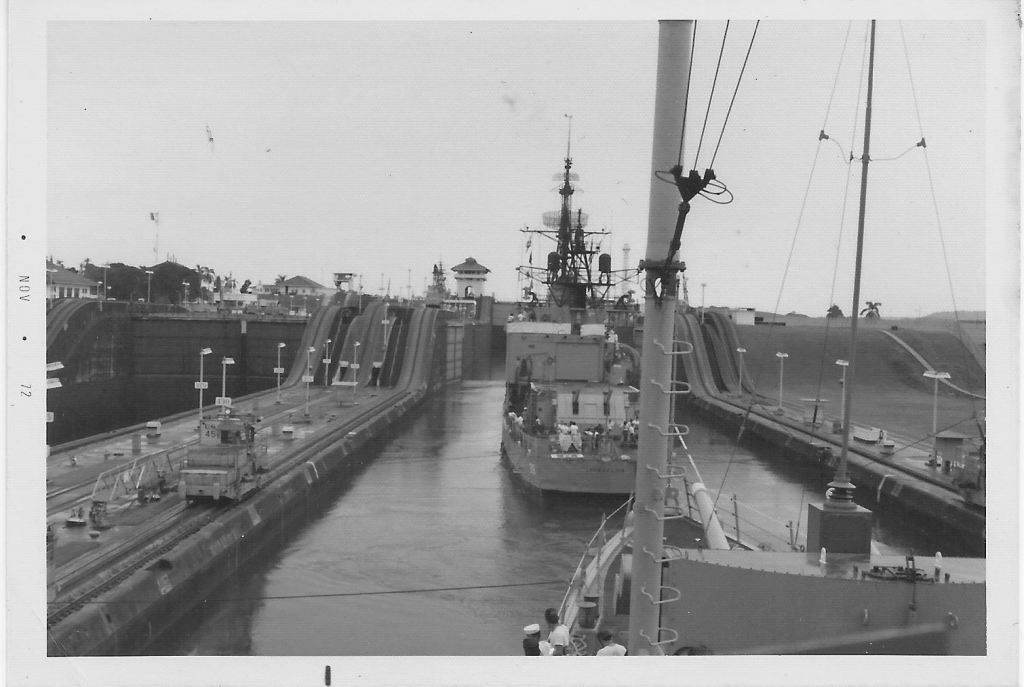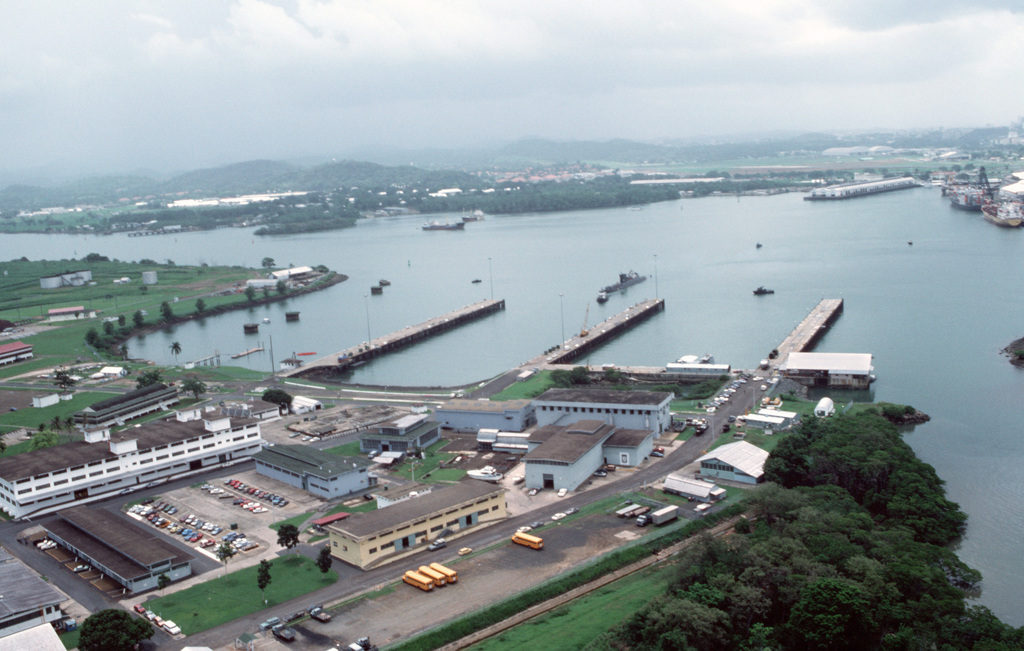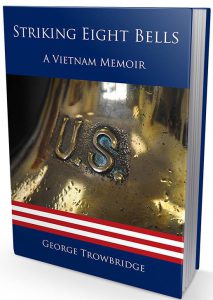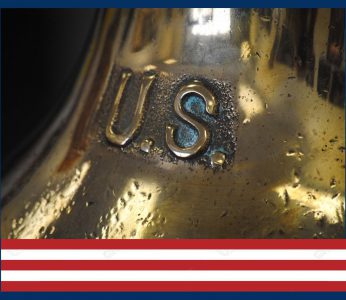Excerpts From: “Striking Eight Bells: A Vietnam Memoir.”
October 1972. Atlantic Fleet Navy destroyers deployed to Vietnam in time to take part in combat operations during the Vietnam Cease Fire Campaign 1972-1973.
On the morning of October 17, 1972, my ship USS Rich (DD 820) departed our homeport in Norfolk, Virginia beginning the long passage to Vietnam. Four days later in company with USS Bordelon (DD 881) we arrived at the Panama Canal Zone early morning on October 21, 1972. As our ship approached the Cristobal breakwater and entered into Limon Bay, the Panama Canal Pilot boarded the ship from the pilot boat. Within a short period of time, the pilot ordered the ship to begin maneuvering to the first lock, the Gatun Lock. Seeing Gatun Lock for the first time makes for an impressive picture. The three successive lock chambers look like a huge staircase. The lock area itself is a lot of concrete and buildings located on either side of the lock. Beyond the grass areas on either side of the lock began the tropical jungle of dark trees and dense foliage.

For many on board, this would be their first trip through the Panama Canal. The canal should be considered one of the man-made wonders of the world. Its length is about 44 nautical miles (about 50 statute miles) from the Atlantic/Caribbean coast to the Pacific coast. While going through the Panama Canal, a ship will be raised and lowered 85 feet. After going through Gatun Lake and Gaillard Cut, the ship enters Pedro Miguel Locks and is lowered 31 feet. After Pedro Miguel Locks, one mile downstream the ship next enters the Miraflores Locks to be lowered about another 54 feet to the level of the Pacific Ocean.
As the ship proceeded to and along the lock wall of the Gatun Lock, small boats came out to the ship to deliver the canal line handlers. Then wire ropes were sent over to the ship from small electronic locomotives called Mules. The Mules ran on steel rail tracks laid along the top of the lock walls and were located on both sides of the locks. After the Mules passed wire ropes to both sides of the ship, they were made fast to the ship’s deck bitts.

Once the wire ropes were secured, the Mules began to winch-in, taking the slack out of the wire ropes. The Mules were then used to tow the ship on the wire ropes alongside the lock walls, and ultimately towed the ship into each lock chamber and assisted the pilot in positioning the ship within each lock chamber. This process would be repeated at each of the lock chambers throughout the ship’s canal passage.
The Gatun Locks consisted of three successive lock chambers. When a ship left the Gatun Locks and entered Gatun Lake, it had been raised 85 feet to the level of the lake. Gatun Lake was a man-made lake and covered an area of about 164 square miles. The shipping channel through the lake was about 15 nautical miles in length. Upon leaving Gatun Lake, you arrived at the more historical section of the canal, the Gaillard Cut, also known as the Culebra Cut, which traversed about eight miles through the Continental Divide of Panama, the highest point on the isthmus.

After the ship passed through the Gaillard Cut, the first of two more locks were reached. The first lock, Pedro Miguel, had one chamber, and lowered the ship 31 feet. From Pedro Miguel, the ship moved into Lake Miraflores and proceeded about one mile to the Miraflores Locks. The Miraflores Locks had two chambers, which lowered the ship the remaining distance, depending upon the height of the Pacific Ocean tides, back to sea level. Being a military vessel, the ship proceeded from the Miraflores Locks about eight more miles to the docks at the Rodman Naval Station across from Balboa. The canal transit had taken over eight hours, so the ship moored at the Rodman Naval Station docks at about 1600 that afternoon.

Except for the duty section, the crew was granted overnight liberty. My section had the duty that night, so no liberty in Panama City for us. The ship was scheduled to get underway the next morning at 1000 to begin our passage to Pearl Harbor. QM1 Janson asked that Jeff, one of the other quartermasters, and I double-check the time, speed, and distance calculations in the passage plan from Panama to Hawaii. We initially got a bit distracted from the task when something caught our eye on the first navigation chart leaving the Canal Zone out to the Gulf of Panama.
On the chart was a location just down the coast labeled “Leper Colony.” The Leper Colony was located just west on the coast from the Pan-American bridge. We looked in the Sailing Directions publication and sure enough, it discussed the community of Palo Seco. Palo Seco was a leprosarium, or hospital, operated in the canal-zone since the disease-ridden days of canal construction, and was actually funded by the U.S. Congress. Both of us were surprised about the existence of the colony. I associated leprosy with biblical stories, not modern times. The rest of our night in Panama was spent checking latitude and longitude coordinates, re-measuring distances, and calculating time, speed, and distance to double-check the estimated time of arrivals (ETAs) at each route leg waypoint.
The next morning, down in the berthing compartment, returning crew were talking about their night in Panama City. One place mentioned by many was a spot called the Blue Goose. The Blue Goose in Panama City was a brothel that was supposedly sponsored by the Panamanian government. One guy aptly described the place as probably being much like a Prohibition era roadhouse, where anything went. Those of us who had duty quickly grew tired of hearing how we had missed out on all the fine women and what a great place the Blue Goose was.
The other thing the crew was happy about was that it was Sunday. Once the ship was out to sea and secured from the sea and anchor detail, for those not going on watch, “holiday routine” would be set. The holiday routine meant that those nursing their hangovers and/or suffering from exhaustion because they had been up all night while on liberty would be able to hit their racks and get some sleep.

At 1000, the ship got underway from the Rodman Naval Station dock. Once the ship was fair in the outbound channel, it proceeded to pass under the Pan-American bridge (The Bridge of the Americas) and headed outbound to the Gulf of Panama, and then on to the Eastern Pacific Ocean. The passage distance of close to 4,700 nautical miles lay ahead of us from the Panama Canal to Pearl Harbor…To read “Striking Eight Bells,” use one of the following links to booksellers: Amazon.com: Books, Barnes and Noble Booksellers, BAM –Books A Million and Smashword.com eBooks.


I made the same cruise on the USS Warrington DD843 1966 1967, I am a Shellback and a Blue Nose. I served on it May 1964 to January of 1968. It was the greatest expierence of my life, and I would do it again tomorrow. Out of boot camp on my first cruise, we were gg to high line the chaplain. We hit rough seas while attached to the USS Barry DL933, for high line, water went down the opened aft hatch and shorted out the switch board. We lost steering control at 20 knots we came out of the water 3 times upon the Barry, we ripped off their port side torpedo tubes then came out of the water again and came down on their motor whale boat, then we came down on her fantail and left our starboard Anchor on her fantail, thank goodness the Chaplain never got on the hi line chair it was squashed like a pancake when we first hit the USS Barry which is now a museum, and I do believe the name USS Barry was put on a DDG 52 some years later. Our crew is very tight bunch of guys, we have a yearly re-union every October. God bless America PS I didnt miss any of those gentlemen clubs you guys did, I spent all my tax free and combat paychecks on wine women and song the whole 10 months of the cruise.
LikeLiked by 1 person
Stephen,
Actually one of my planned upcoming blogs is about the Warrington DD 843. I provide a bit of information about what happened to her on 17 July 1972 when she was struck by two mines. Principally, the point I make is also in my book “Striking Eight Bells,” was when our ship arrived in Subic Bay, we all could see the now deserted and dark Warrington at her berth and how it was a stark reminder to us of what could happen to any ship operating in Vietnam’s coastal waters.
LikeLike
I was assigned to HSL-32 Dey 3 aboard the USS Joseph Hewes which accompanied Warrington to Vietnam in 1972. We we with in the gulf when Warrington was attacked. We took some of her crew home to Newport. It was very sobering to see her at SRF Sunoco, and reminder us all the ..it happens and war is for real!
LikeLike
I was on the DD824 BASULONE also on that cruise out of Newport. Iserved on the Troppe years later also on that cruise. Trippe Hewes Warrington Basilone. 4 left only 3 came back!
LikeLike
The USS Basilone DD824 was also with the Hewes and Warrington for that 1972 transit from Newport to Vietnam. Remember when we all drank the EM club in the canal zone out of beer plus some beer drinking out of boondockers and other stuff!😁
LikeLike
USS MULLINNIX DD944. outa Norfolk Va. Departed For Vietnam April 15 1972 Riders On The Storm! To many memories to tell. Returned Norfolk October. 1972! Never Forget my brothers!!!
LikeLike
Thanks for bringing back some good and challenging moments/memories. We(DESRON 4…. Squadron 4)took the same trip in November 1st, 1967. We were the first Destroyer Squadron from the Atlantic Ocean side to be assigned to Vietnam. We deployed from Charleston, South Carolina. All 7 of us destroyers with our Flag Ship(USS Manley DD-940)transitioned from the Atlantic side to the Pacific side through the Panama Canal. We were ready for combat. My ship was the USS Robert H. McCard(DD-822). Better known as the Rocking Bobby.
LikeLike